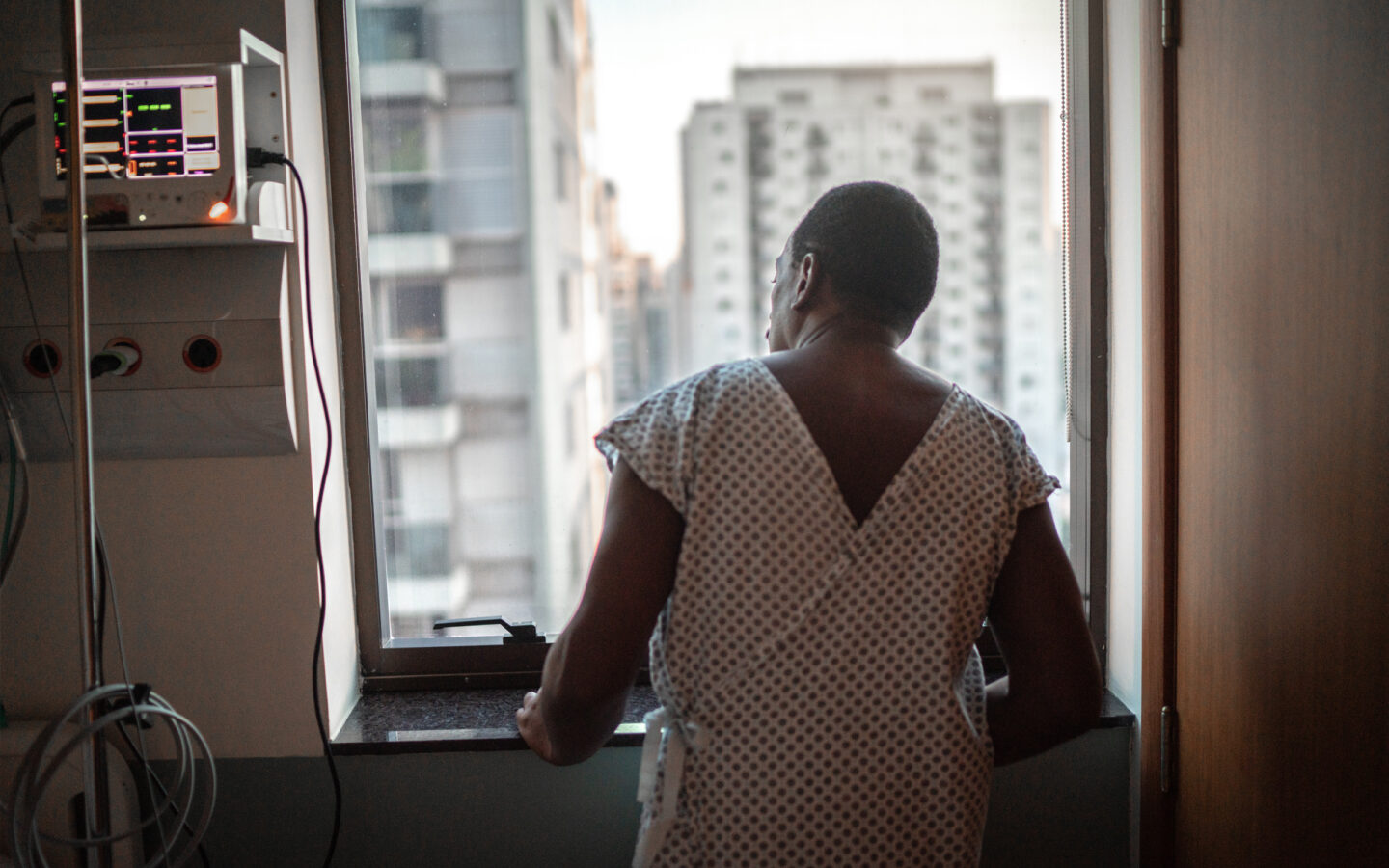- We all want to believe that we care for all patients equally. But the data shows that this isn’t always the case.
- Racism, prejudice, and unequally distributed resources in health care have resulted in serious care gaps among people of color, and the pandemic has made this clearer than ever.
- As nurses, we’re often one of the most substantial parts of a patient’s healthcare experience.
- Racism and inequity won’t be solved overnight, but we can be advocates for real change.
As nurses, we see firsthand that often, life simply isn’t fair. We see it on a daily basis, especially in acute care settings, but in other care settings, too. We see patients and their families grapple with tough diagnoses, challenging setbacks — the worst days of their lives.
Life can change in an instant, and many times, there is no rhyme or reason to it. Nothing to point to, nothing to fix.
But other times, there’s so much more to the story. Sometimes, the situation is more than just unfair — it’s inequitable.
The COVID-19 pandemic has illustrated with stark clarity the longstanding inequities and racism that are embedded deep in our health care system. People of color face a higher risk of not only contracting the virus, but also of experiencing severe complications and death due to COVID-19.
While there is some variability in measuring COVID-19 morbidity and mortality, Black and Native people are currently about twice as likely to die of the disease than whites and Asians. Data from America Public Media’s APM Research Lab shows that the mortality rates of Latinx and Pacific Islander patients are also increasing faster than those of whites.
To put this in perspective, if communities of color faced the same rates of death as white Americans due to COVID-19, an additional 18,000 Black, 6,000 Latino, 600 Indigenous, and 70 Pacific Islander Americans would still be alive — and these are stats from this summer; who knows how these numbers will change!
Grappling with this level of inequity is not easy. Health disparities are multifaceted – there are many factors contributing to these numbers, and the solutions don’t exist exclusively at the bedside. That said, as nurses caring for these patients, we need to understand what these factors are, and what we can do to reverse this trend.
We all want to believe that we care for all patients equally. But the data shows that this isn’t always the case.
Usually, the way we can best support our patients is to provide expert clinical care or emotional support in the moments when we’re with them. But with the inequities we’re seeing around COVID-19, something different is required of us. It’s not so much support at the bedside that our patients need. Rather, we need to take the time to understand what’s bringing so many more of these patients to the hospital in the first place.
Social determinants of health, structural racism, health inequity, disparities in care, access and health status – all of these factors affect our patients of color at far higher rates than white patients, with devastating consequences, even before the pandemic.
Learning and growing
And the pandemic hasn’t been the only collective experience Americans have shared this year. We’ve also seen the movement for racial justice in America grow following the deaths of George Floyd, Breonna Taylor, and other unarmed Black Americans killed by police. Protests in cities across the nation prompted all sorts of people to ask what they can do to ensure fair treatment for all Americans, and many people are being exposed to the concept of structural racism and inequity for the first time.
If that’s you, you aren’t alone. We have all had different experiences, and we all can continue to learn and grow at every stage of our lives.
But as caregivers, we have to move beyond simply being aware of these issues – we have to be real advocates for change. Patients’ experiences with us are often the most substantial component of their entire health care experience. So for us, working against racism means more than just avoiding overt discrimination against patients and colleagues. It means understanding that racism is structural and that inequity runs deep.
If we haven’t experienced racism personally, we won’t ever understand it fully. But that doesn’t mean we can’t continue to learn and explore ways new ways of acting against it. It can be helpful to think about the impact of racism in health care in three categories.
1. Seeing What’s in Front of Us: Racism in the Health Care System
Unfortunately, medical bias is real. Empirical evidence backs up patient experiences; studies have consistently shown that some racial groups are treated unfairly in our hospitals. People of color consistently report experiencing bias and discrimination in health care settings, and data confirms that conscious and unconscious biases result in different standards of care being applied to Black patients and other patients of color.
Even as recently as 2016, half of white medical trainees reported believing myths such as Black people have thicker skin or less sensitive nerve endings than white people. Furthermore, our nation has a history of medical experimentation on Black Americans, and as a result, many Black patients report higher levels of distrust even with routine care, which has a direct negative impact on health outcomes.
In an essay for Vox, Harvard professor Marya T. Mtshali explains how the legacy of anti-Black racism in health care affects COVID-19 care today.
“The damaging implicit and explicit biases present in our medical system do not suddenly vanish because we are in the middle of a pandemic,” writes Mtshali. “In fact, the pandemic has made them impossible to ignore.”
Many resources exist to help clinicians adopt anti-racist behaviors in their practices. One good place to start during the pandemic is the American Hospital Association’s list of health actions to promote equity during the outbreak, which includes leveraging community partnerships, tracking patient data, and emphasizing diverse communities with preventive education.
2. Access Denied: Unequally Distributed Health Resources
Health care resources aren’t equally available to all. One of the most stark examples is unequal access to COVID-19 testing. Testing depends on health infrastructure. Where infrastructure does not exist, tests are more difficult to distribute, and the disease is very difficult to contain. In mapping testing supply and demand across the country, data journalism website FiveThirtyEight found white neighborhoods have more access to testing sites. In some parts of California and Texas, the number of people who should be tested exceeds supply by hundreds of thousands.
The CDC recently launched a resource page designed to help communities address COVID-19 treatment inequities due to race and other factors. Look here to learn about their framework and what you can do in your community.
3. The Root of the Issue: Social Determinants of Health
Social factors, such as where people live, their ability to access employment, food, health care and more, directly impact health status.
Racism itself is a social determinant. Even when factors like poverty are removed, Black populations are more likely to suffer from health conditions like hypertension, asthma and diabetes. Researchers suggest that the gap is explained by a lifetime of stress caused by racism and denied opportunities. When it comes to COVID-19, some of these health conditions may also make patients more likely to die of the disease.
This is a multifaceted issue. It’s public policy. It’s health care. It’s housing, it’s food, it’s air quality – and so much more. Nurses have a role here, but we aren’t the singular factor at play. If a Black woman has developed hypertension after a lifetime of worrying about her sons being shot, no amount of sympathy can undo that. But, our ability to see, acknowledge and treat the whole patient is one way that we can begin to address the impact that structural racism has on our patients’ health.
Further, all of us can do more to be anti-racist no matter who we are or where we provide care. We can stop labeling patients “noncompliant” and start asking about the factors that are keeping them from following medical advice. Can they get to the pharmacy? Are they facing food insecurity? Are they reliant on public transportation to get to appointments? We can also think critically about the policies that have led to the unequal distribution of health care, housing and employment resources.
“Everyone should have the opportunity to achieve good health,” says Dr. Camara Phyllis Jones, past president of the American Public Health Association, “[but] if we try to address the social determinants of health without tackling bigger systems of structural inequity like racism and sexism… we risk making health disparities worse.”
There are many frameworks and programs that nurses and health care organizations can use to learn more and take action. The American Journal of Nursing provides a course in addressing implicit bias that can benefit individuals and programs such as the Alliance for Innovation on Maternal Health, which creates organization-wide standardization protocols to address biases and viarabilities in care. Starting a conversation about what resources are available in your facility and whether new programs might be added or considered is a proactive first step any employee can take.
These issues won’t resolve quickly. And we alone can’t remove the racism our patients face throughout their lives.
But, nurses — the fact that we can’t do everything shouldn’t keep us from doing anything. We can each commit to doing what we can, and collectively, we can push the health care system toward a more equitable future.


